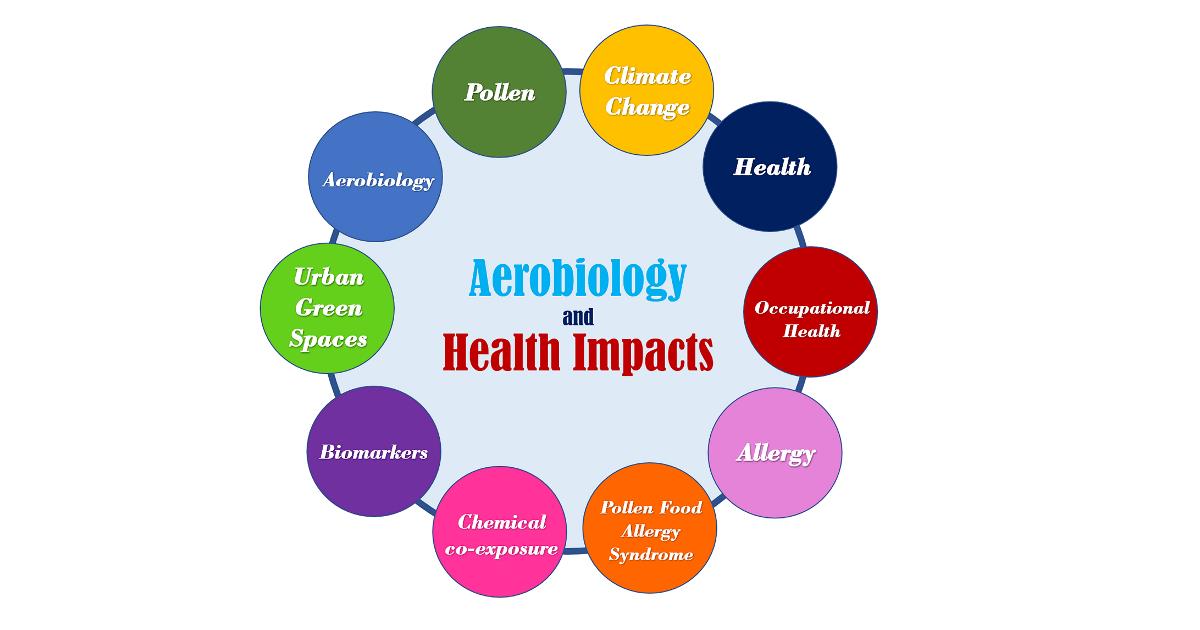Aerobiology and Health Impacts
A special issue of Atmosphere (ISSN 2073-4433). This special issue belongs to the section "Aerosols".
Deadline for manuscript submissions: closed (30 June 2023) | Viewed by 11288

Special Issue Editors
Interests: aerobiology; allergy; environmental exposure; occupational health; biological agents; climate change; innovative and omics methodologies
Special Issues, Collections and Topics in MDPI journals
Interests: aerobiology; genetic polymorphisms; microRNA; microclimate; thermal comfort; synergistic interactions; occupational health
Special Issues, Collections and Topics in MDPI journals
Special Issue Information
Dear Colleagues,
The global burden of allergy is estimated to be between 30% and 40%. Asthma, rhinitis, and dermatitis are the main derived pathologies that may affect individuals. Airborne biological-derived agents can be vegetable or animal in origin, and in this context residential and workplace settings can both be considered sources of exposure. Pollen is the most represented component in bioaerosol, and can be responsible for various forms of allergy in sensitized individuals. This biocomponent is linked to different topics, such as environmental and human health. In this regard, numerous related themes include climate change, chemical pollution, extreme events, meteorological variables, indoor and outdoor exposure, urban green spaces, Sustainable Development Goals, occupants, allergy, occupational allergy, pollen food allergy syndrome, and biomarkers. Exposure in urban, suburban, and rural environments as well as exposure to vegetation are factors to take into account.
This Special Issue aims to review the current knowledge on several aspects of aerobiology, including impacts on public and occupational health, as well as innovative and omics methodologies to evaluate the sources of exposure and the health effects. Experimental and review studies on these topics are welcome.
Dr. Maria Concetta D'Ovidio
Dr. Pasquale Capone
Guest Editors
Manuscript Submission Information
Manuscripts should be submitted online at www.mdpi.com by registering and logging in to this website. Once you are registered, click here to go to the submission form. Manuscripts can be submitted until the deadline. All submissions that pass pre-check are peer-reviewed. Accepted papers will be published continuously in the journal (as soon as accepted) and will be listed together on the special issue website. Research articles, review articles as well as short communications are invited. For planned papers, a title and short abstract (about 100 words) can be sent to the Editorial Office for announcement on this website.
Submitted manuscripts should not have been published previously, nor be under consideration for publication elsewhere (except conference proceedings papers). All manuscripts are thoroughly refereed through a single-blind peer-review process. A guide for authors and other relevant information for submission of manuscripts is available on the Instructions for Authors page. Atmosphere is an international peer-reviewed open access monthly journal published by MDPI.
Please visit the Instructions for Authors page before submitting a manuscript. The Article Processing Charge (APC) for publication in this open access journal is 2400 CHF (Swiss Francs). Submitted papers should be well formatted and use good English. Authors may use MDPI's English editing service prior to publication or during author revisions.
Keywords
- aerobiology
- pollen
- climate change
- health
- occupational health
- allergy
- pollen food allergy syndrome
- chemical co-exposure
- biomarkers
- urban green spaces
Benefits of Publishing in a Special Issue
- Ease of navigation: Grouping papers by topic helps scholars navigate broad scope journals more efficiently.
- Greater discoverability: Special Issues support the reach and impact of scientific research. Articles in Special Issues are more discoverable and cited more frequently.
- Expansion of research network: Special Issues facilitate connections among authors, fostering scientific collaborations.
- External promotion: Articles in Special Issues are often promoted through the journal's social media, increasing their visibility.
- e-Book format: Special Issues with more than 10 articles can be published as dedicated e-books, ensuring wide and rapid dissemination.
Further information on MDPI's Special Issue polices can be found here.





